- Home
- Alison Weir
The Princes in the Tower Page 5
The Princes in the Tower Read online
Page 5
Richard was essentially the child of a violent age, born to a legacy of civil war. His childhood and formative years were overshadowed by battles, treachery and violent death. When he was eight his father and his brother Edmund were killed in battle. He grew to maturity in an uncertain and insecure world, and twice suffered the agony of exile. He
30
saw his brother the King betrayed by their brother Clarence and by Warwick, who had been as a father to Richard. It is therefore fair to say that by the age of eighteen he had become hardened to violence and treachery, and had developed a ruthless streak in his character.
Gloucester first saw battle himself at Barnet in 1471, where he acquitted himself well leading the vanguard of the royal forces, showing considerable ability in warfare whilst in the thick of the fighting. He also fought brilliantly at Tewkesbury, for which he received yet more lands by way of reward. It was after Tewkesbury that Gloucester's ruthlessness first became apparent, when, as Constable of England, he exercised his right to sentence to summary execution, without trial or witnesses, the last Beaufort Duke of Somerset and other Lancastrians, including one in holy orders who was entitled to immunity from the death penalty. These unfortunate men had been forcibly dragged from sanctuary in Tewkesbury Abbey on Gloucester's orders. Some writers have also implicated Gloucester in the death of Prince Edward of Lancaster, as we have seen. Within a month of this, the Duke had assisted in the murder of Henry VI. Whether he struck the fatal blow or not, Gloucester, at the impressionable age of eighteen, must have learned from this a useful lesson about the advantages of political murder, and would have been shown a clear precedent for the elimination of a king by violence.
Richard of Gloucester was typical of the magnates of the period: acquisitive, hungry for wealth, land and power, brave in battle, tough, ruthless, energetic, and keenly interested in warfare, heraldry, and the manly pursuits such as hunting and hawking. He was staunchly loyal to the King and to his own supporters and followers, but did not scruple to ride rough-shod over the rights of other people. Ambition drove him. Mancini, writing in 1483, says that from the first 'there were those who were not unaware of his ambition and cunning, and who had misgivings about where they would lead'.
Gloucester also courted popularity, and worked hard all his adult life to win it. He was an able man, and had some good qualities: he was hard-working and conscientious in his duties. He also had that in him that inspired the loyalty of others, and his fair share of the charisma of the Plantagenets. Croyland states he had a quick, alert and 'overweening' mind, that he was courageous and daring, and that he had 'a sharp wit [and] courage high and fierce'.
31
In his youth he was amorous; he acknowledged two bastards, who were probably born before 1472. One was John of Pontefract, or of Gloucester, knighted in 1483, who was still under age in 1485 when his father appointed him Captain of Calais, calling him 'our dear son, whose quickness of mind and agility of body, and inclination to all good customs give us great hope of his good service for the future'. The other was Katherine, who was generously dowered by Richard when she married William Herbert, Earl of Huntingdon, in 1484. A mysterious Richard Plantagenet of Eastwell in Kent, of whom more will be heard later, is also thought to have been a bastard son of Richard's, and there may have been four others, including one Stephen Hawes, but the evidence for these is unreliable.
Conflicting descriptions of Richard left by his contemporaries have given rise to yet another controversy surrounding him -- what did he look like? The consensus of opinion was that, unlike Edward IV and Clarence, he resembled his father, being dark-haired and short of stature. This lack of height is attested to by most writers, as is the slightness of his body. The Scots envoy, Archibald Whitelaw, who saw Richard in 1484, noted he had 'such a small body', while the Silesian knight, Nicholas von Poppelau, who also met Richard that year, commented on how lean he was. Later, John Rous would sneer at his 'little body and feeble strength', while Vergil, whose description was said to be based on the testimony of those who had known Richard, said he was 'deformed'.
It is this question of deformity that has long puzzled historians. In Richard's lifetime no writer made reference to any: Croyland, Commines and the Great Chronicle make no mention of deformity, neither do the two earlier eyewitnesses, Whitelaw and von Poppelau. The Elizabethan antiquarian John Stow told Sir George Buck 'he had spoken with old and grave men who had often seen Richard, and they had affirmed he was not deformed but of person and bodily shape comely enough', which is slightly at variance with the eyewitness reports. In 1491, moreover, York Civic Records record that in the course of a fight a schoolmaster called John Payntour called Richard a 'Crouchback', the first instance of him being referred to by what later became a popular nickname. Richard had often been in York and was well-known there. Perhaps Master Payntour was merely being provocative, but it is quite possible that he had seen Richard and knew
32
there was no longer any need for tact.
As the Tudor period drew on, so the legend of the deformed king was elaborated upon. Rous, writing before 1490, stated that he had 'unequal' shoulders, 'the right higher and the left lower', and a humped back. In Vergil's account it is the left shoulder that is 'higher than the right'. More, who also claimed one shoulder was higher than the other, echoed Vergil. The eyewitness von Poppelau wrote of Richard's 'delicate arms and limbs'; by More's time it was believed that he had been 'ill featured of limbs' and 'crook-backed', with a 'shrivelled withered arm'.
To contemporary eyes, physical deformity was the outward manifestation of evil character. Thus portraits of Richard, held to have been painted with the aim of flattering him, were altered in Tudor times to reflect what people believed he had really looked like. The earliest representation of him is the line drawing by John Rous in the first York Roll, which shows no deformity. Then there are three portrait types, of which several versions exist. The earliest is in the collection of the Society of Antiquaries of London, a masterful and evidently faithful copy of an original believed to have been from life, which has been tree-ring dated to c. 1516-22. In this, Richard has no apparent deformity.
The second portrait type is that in the Royal Collection, which has been tree-ring dated to c. 1518-23. This is the most important of the three as it was the one on display in the royal palaces, which is probably why it was radically altered. X-rays taken in the 1950s and 1973 show that the right shoulder has been overpainted above the still-visible original shoulder line by a later hand, and that the eyes have been narrowed. About thirty copies of this portrait are in existence, including that in the National Portrait Gallery, and all show the added deformities.
The third likeness is also in the collection of the Society of Antiquaries, and is entitled the 'Broken Sword' portrait; this has been tree-ring dated to c. 1533-43. Again, X-rays show drastic alterations. The portrait originally had a much-raised left shoulder and deformed left arm, but in the seventeenth or eighteenth centuries, it was altered to show Richard with a more normal appearance. A copy of this portrait, unaltered and showing the left arm ending in a stump, was sold in 1921 in Brussels to a private collector.
33
Richard's face in his portraits matches the descriptions given by Rous and Vergil, the latter writing that he had 'a short and sour countenance', and also More, who said he was 'hard-featured of visage'. It is a stern face, with cold eyes and a thin-lipped, tightly pursed mouth, a portrait of a man looking older than his years.
So what was the truth about Richard's appearance? It would appear that he did have some slight deformity which eyewitnesses either did not notice or were too tactful to refer to overtly. It is possible that he suffered a mild form of Sprengel's deformity, or under-development of the right or left scapula leading to inefficient flexing of the shoulder muscles. There must, after all, have been some grain of truth in what the early Tudor chroniclers wrote, for there were many people still alive who could have pointed out any gross anomalie
s in their works, people who remembered Richard well. Nevertheless, as memories faded and the years passed, the truth became more distorted, until by 1534 it was generally accepted that he had been a villainous hunchback with a withered arm. And there were then few of his contemporaries still alive to pour scorn on such nonsense.
* * *
In 1471, Gloucester and Clarence were reconciled to each other, but not for long. In Clarence's household lived his wife's younger sister, Anne Neville, who, with Isabella, was co-heiress to their father, the late Earl of Warwick. Warwick had not been attainted, and his titles and estates should therefore have passed to his widow, Anne Beauchamp, who was entitled to a third share, and to his two daughters, the remainder being divided equally between them. But Edward IV had seized control of the Warwick inheritance and divided it up, giving some lands and offices to Clarence, in right of his wife, and some to Gloucester, whilst ignoring the rights of the Dowager Countess. Clarence, who had received the lion's share, felt he should have all, and was therefore mortified when in 1471 Richard made it plain that he wanted to marry Anne Neville and claim half her patrimony. 'This, ' wrote Croyland, 'did not suit the plans of the Duke of Clarence, since he feared a division of the Earl's property.' He knew very well that marriage to Anne would entitle Richard to half the Warwick inheritance, and this made him determined to prevent the marriage. 'In consequence of this, violent dissensions arose between the brothers.'
34
Anne Neville was then fifteen. She had been briefly married, almost certainly in name only, to Prince Edward of Lancaster, and since his death she had been living in Clarence's great London house, The Erber, in Downegate Street near the Thames. 'In presence she was seemly, amiable and beauteous, and in conditions full commendable and right virtuous and, according to the interpretation of Anne her name, full gracious,' wrote Rous, who revered Anne as Warwick's daughter. There is a drawing of her in royal heraldic robes in the Rous Roll, which shows a slender woman with long fair hair. Richard had known Anne in youth at Middleham, and the Flemish chronicler Majerres claims he became close to her then, yet his motive for marrying her was not so much love as the desire to acquire her lands. Neither Richard nor Clarence would show any regard at any time for the vociferously voiced claims of the Countess of Warwick, who had been illegally deprived by the King of her dower. To men like these, she simply did not count.
Croyland tells us that Clarence was so determined that Gloucester should not marry Anne Neville that he 'caused the damsel to be concealed in order that it might not be known by his brother where she was. Still, however, the craftiness of the Duke of Gloucester so far prevailed that, having discovered the girl dressed as a kitchen maid in London, he had her moved to the Sanctuary of St Martin's', near Newgate. Clarence demanded that Anne be returned to his house, but he was not her legal guardian and was powerless to prevent Richard from placing her in the care of her uncle, the Archbishop of York.
'At last,' wrote Croyland, 'their most loving brother the King agreed to act as mediator, and the whole misunderstanding was set to rest.' A private war, however, had only just been averted. A seething Clarence had to agree to the carving-up of the Warwick estates, even though he received the greater share of them and was created Earl of Warwick and Salisbury in right of his wife. Gloucester, in turn, was, on marriage, to receive Warwick's estates in Yorkshire, Northumberland and Cumberland, where he would inherit the loyalty and service of those who had served the Nevilles.
Richard and Anne were married in the spring or summer of 1472 at Westminster, either in the Abbey or in St Stephen's Chapel. Richard was so anxious for the marriage to go forward that he did not wait for a papal dispensation -- which was necessary, as he and Anne were second
35
cousins. After the wedding the couple lived chiefly at Middleham Castle, a massive eleventh-century stronghold on high ground overlooking the River Ure in Yorkshire, which had been previously owned and enlarged by the Nevilles. Although primarily built for defence, the castle was in Richard's day extremely comfortable, with luxurious private apartments, fireplaces in the domestic ranges, and communal latrines. The Duke himself built a new great hall with spacious windows above the old keep. There was a chapel, and plenty of accommodation for the many scores of retainers a royal duke needed in his retinue. Middleham is now a ruin, but enough remains to give a good impression of the splendour that once earned it the name 'the Windsor of the North'.
We know nothing at all about Richard and Anne's personal life, nor whether they were happily or unhappily married, nor what they felt about each other. Anne's health seems to have been delicate, and they had one child only, named Edward of Middleham after the place of his birth, who was probably born in the spring of 1476, as Rous states he was seven and a half in August 1483. He seems to have been a frail boy as he rarely left Middleham, where he was nursed as a baby by one Jane Collins, who earned 100s. per annum, and he was later tutored by a Master Richard Bernall.
In the summer of 1473 Gloucester arranged for his mother-in-law, the Countess of Warwick, to join the household at Middleham. This unfortunate lady, still in her forties, had been living in the Sanctuary at Beaulieu Abbey in Hampshire since Warwick's death, occupying herself by sending urgent petitions for the restoration of her lands to the King, the Queen, the King's mother the Duchess of York, and even the young Princess Elizabeth, but to no avail. On 13th June, 1473, the Paston Letters record that 'the Countess is now out of Beaulieu sanctuary, and Sir James Tyrell conveyeth her northward, men say by the King's assent'. Tyrell was one of Richard's most trusted retainers. Rous later stated that the Countess had fled to Gloucester 'as her chief refuge', only to find herself'locked up for the duration of his life'. As Rous had always taken such a particular interest in the Beauchamp and Neville families, and made it his business to record their deeds, it is quite possible that this was the Countess's fate. Certainly she made no public appearances after this time. Indeed, both Gloucester and Clarence were instrumental in bringing about the passing, in 1474, of an Act of
36
Parliament settling all the Warwick estates upon themselves in right of their spouses, and ignoring the rights of the Dowager Countess, who was deemed to be 'naturally' and legally dead. Gloucester had now learned another valuable political lesson: that Parliament could be manipulated to pass legislation that took no account of the principles of established law.
37
4. Clarence and the Wydvilles
Edward IV may have been a licentious man, but his court was decorous and ceremonious. From the beginning his aim was to emulate Burgundy, whose court was then the model for Europe. Thereafter, for several decades, Burgundian influence was to be detected in all aspects of court life.
Visually, Edward's court was magnificent -- a Bohemian visitor, Gabriel Tetzel, described it in 1466 as 'the most splendid court that could be found in all Christendom'. The King favoured and refurbished the palaces of the Thames Valley -- Westminster, the Tower, Greenwich, Sheen, Eltham and Windsor. In all of these he made extravagant improvements, patronising architects, stonemasons, sculptors, glaziers, silversmiths, goldsmiths, jewellers and merchants dealing in luxury goods such as tapestries and fabrics. Hence the royal palaces were supplied with everything 'in such costly measure', says Tetzel, 'that it is unbelievable that it could be provided'. Rich cloth of Arras adorned the walls, the tables were set with fine napery and gold, silver and gilt plate, chairs and cushions were upholstered in velvet and damask, beds covered with sheets of fine holland cloth and counterpanes of crimson damask or cloth of gold trimmed with ermine. In summer there were elaborate picnics by the river, with tables set up in the gardens under the trees; courtiers could shade themselves in silken tents, and watch the King and his guests glide past along the river in gilded barges: from these issued the music for which Edward's court was renowned. Croyland tells us that the court presented 'no other
38
appearance than such as fully befits a most mighty kingdom fil
led with riches'.
Court etiquette was very formal and a strict code of courtesy prevailed. Banquets could last three hours and more, and on one occasion the Queen kept her ladies on their knees throughout while she and her guests ate in silence. Even her own mother had to stand until the Queen had been served the first course. On state occasions, and at the Christmas and Easter courts, the King and Queen always appeared wearing their crowns.
All of this had to be paid for. Although the expenses of his court were actually less in real terms than those of any previous mediaeval English monarch, Edward IV borrowed thousands of pounds from financiers of the City of London and Italian merchant bankers, and pawned some jewels, but in the end stringent economies had to be enforced. These were laid down in the Black Book of the Household in 1471-2 and made Edward rather unpopular, for from thenceforth household supplies such as wood for fires, torches, candles, rushes for floors, straw for mattresses, food, wine and ale were rationed, the duties of servants strictly delineated, and restrictions placed on the number of servants a nobleman might bring to court: a duke was allowed twelve, a baron only four.
By the early 1470s Edward IV was already carrying out the duties of kingship in a suitably magnificent setting. He was well aware of the political value of lavish display, but during the latter years of his reign there were fewer extravagant ceremonies at court and in public.
The King's needs were looked after by the officers of the royal household, which was at the core of the court, but many of these posts were sinecures held by the great magnates and delegated to lesser mortals. Then there were in attendance the royal councillors, the civil servants, the domestic servants, visiting nobles, foreign ambassadors and visitors, the ladies and officers of the Queen's household, and a whole army of petitioners seeking favours from the King. The purchasing and purveying of influence, grace and favour were the main business of the court. Thus ambitious magnates battled for supremacy in an atmosphere charged with vicious competitiveness and ruthless ambition.

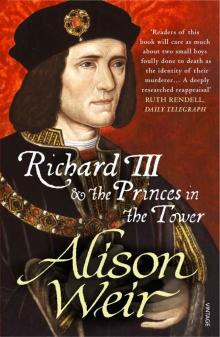 Richard III and the Princes in the Tower
Richard III and the Princes in the Tower Britain's Royal Families: The Complete Genealogy
Britain's Royal Families: The Complete Genealogy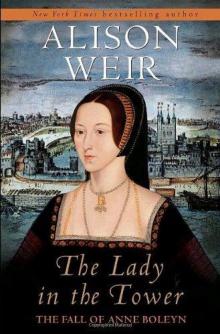 The Lady in the Tower: The Fall of Anne Boleyn
The Lady in the Tower: The Fall of Anne Boleyn Six Wives of Henry VIII
Six Wives of Henry VIII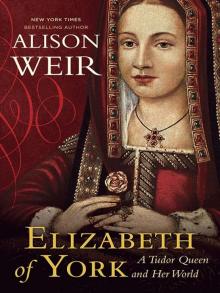 Elizabeth of York: A Tudor Queen and Her World
Elizabeth of York: A Tudor Queen and Her World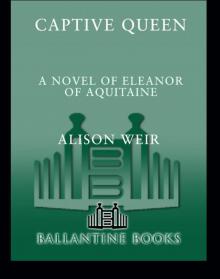 Captive Queen
Captive Queen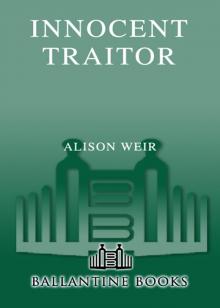 Innocent Traitor
Innocent Traitor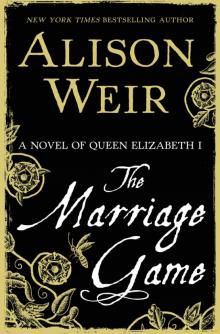 The Marriage Game
The Marriage Game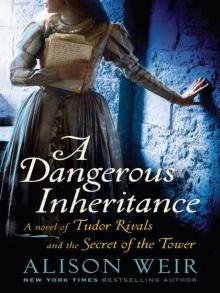 A Dangerous Inheritance
A Dangerous Inheritance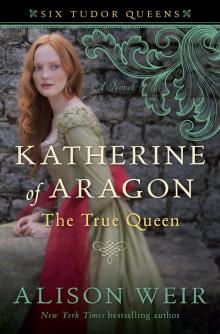 Katherine of Aragón: The True Queen
Katherine of Aragón: The True Queen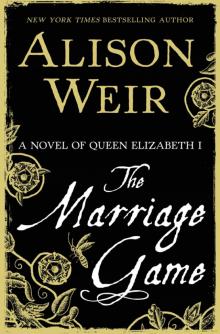 The Marriage Game: A Novel of Queen Elizabeth I
The Marriage Game: A Novel of Queen Elizabeth I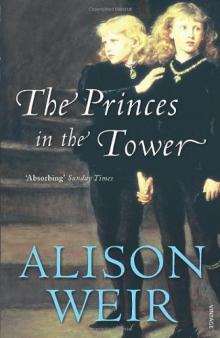 Princes in the Tower
Princes in the Tower Anne Boleyn: A King's Obsession
Anne Boleyn: A King's Obsession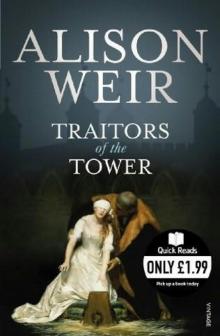 Traitors of the Tower
Traitors of the Tower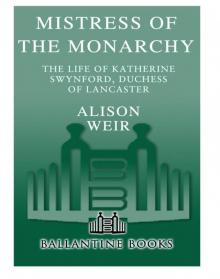 Mistress of the Monarchy: The Life of Katherine Swynford, Duchess of Lancaster
Mistress of the Monarchy: The Life of Katherine Swynford, Duchess of Lancaster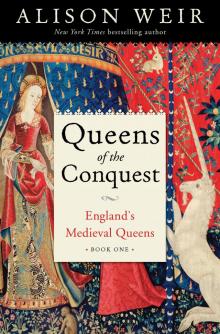 Queens of the Conquest: England’s Medieval Queens
Queens of the Conquest: England’s Medieval Queens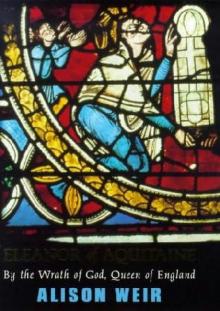 Eleanor of Aquitaine: A Life
Eleanor of Aquitaine: A Life Mary, Queen of Scots, and the Murder of Lord Darnley
Mary, Queen of Scots, and the Murder of Lord Darnley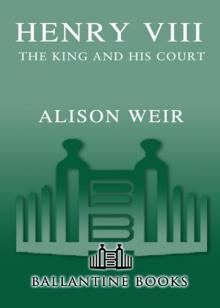 Henry VIII: The King and His Court
Henry VIII: The King and His Court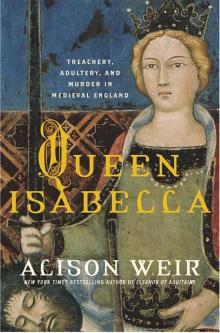 Queen Isabella: Treachery, Adultery, and Murder in Medieval England
Queen Isabella: Treachery, Adultery, and Murder in Medieval England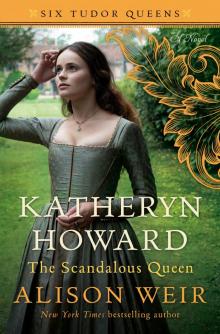 Katheryn Howard, the Scandalous Queen
Katheryn Howard, the Scandalous Queen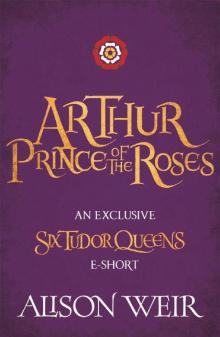 Arthur- Prince of the Roses
Arthur- Prince of the Roses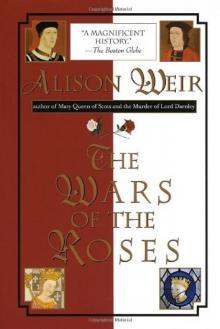 The Wars of the Roses
The Wars of the Roses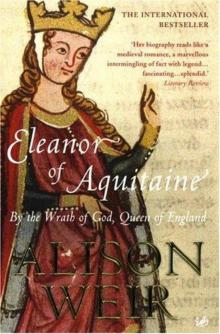 Eleanor of Aquitaine: By the Wrath of God, Queen of England
Eleanor of Aquitaine: By the Wrath of God, Queen of England Mary Boleyn: The Great and Infamous Whore
Mary Boleyn: The Great and Infamous Whore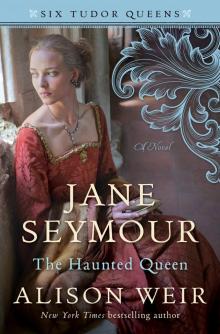 Jane Seymour: The Haunted Queen
Jane Seymour: The Haunted Queen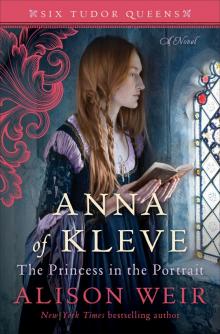 Anna of Kleve, the Princess in the Portrait
Anna of Kleve, the Princess in the Portrait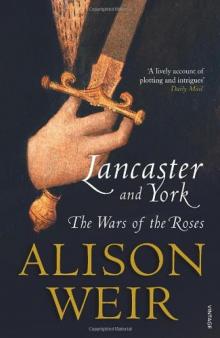 Lancaster and York: The Wars of the Roses
Lancaster and York: The Wars of the Roses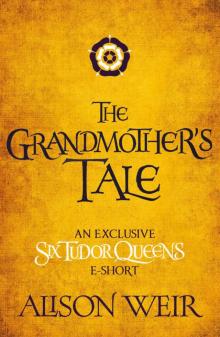 The Grandmother's Tale
The Grandmother's Tale The Princess of Scotland (Six Tudor Queens #5.5)
The Princess of Scotland (Six Tudor Queens #5.5)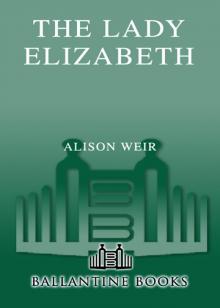 The Lady Elizabeth
The Lady Elizabeth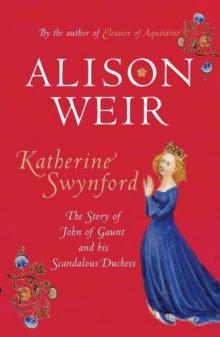 Katherine Swynford: The Story of John of Gaunt and His Scandalous Duchess
Katherine Swynford: The Story of John of Gaunt and His Scandalous Duchess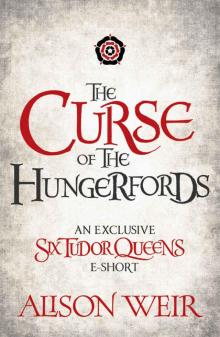 The Curse of the Hungerfords
The Curse of the Hungerfords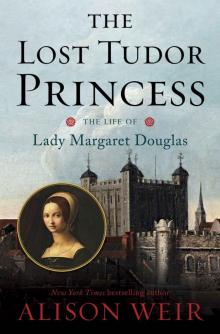 The Lost Tudor Princess: The Life of Lady Margaret Douglas
The Lost Tudor Princess: The Life of Lady Margaret Douglas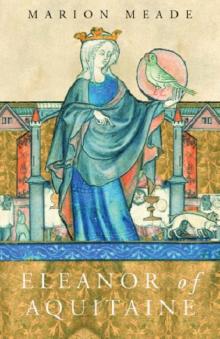 Eleanor of Aquitaine
Eleanor of Aquitaine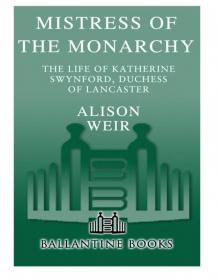 Mistress of the Monarchy
Mistress of the Monarchy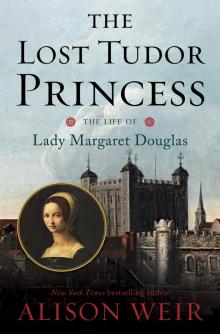 The Lost Tudor Princess
The Lost Tudor Princess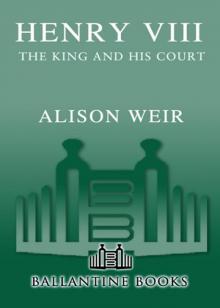 Henry VIII
Henry VIII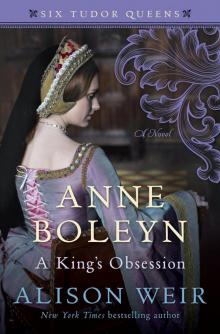 Anne Boleyn, a King's Obsession
Anne Boleyn, a King's Obsession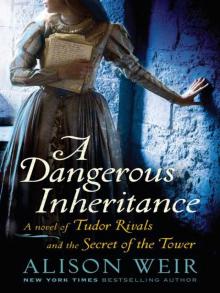 A Dangerous Inheritance: A Novel of Tudor Rivals and the Secret of the Tower
A Dangerous Inheritance: A Novel of Tudor Rivals and the Secret of the Tower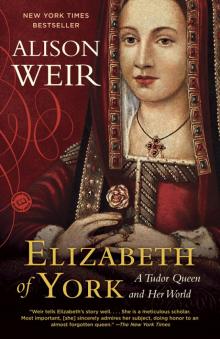 Elizabeth of York
Elizabeth of York Katherine of Aragon, the True Queen
Katherine of Aragon, the True Queen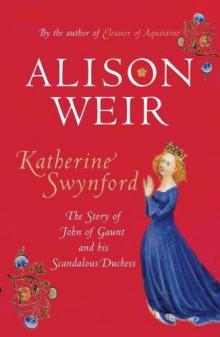 Katherine Swynford
Katherine Swynford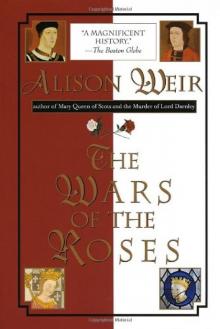 Wars of the Roses
Wars of the Roses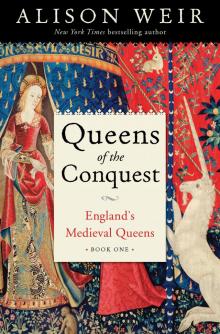 Queens of the Conquest
Queens of the Conquest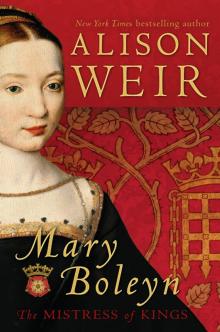 Mary Boleyn
Mary Boleyn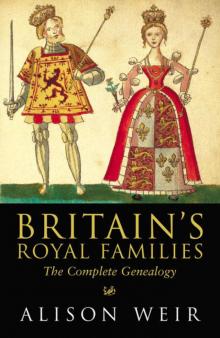 Britain's Royal Families
Britain's Royal Families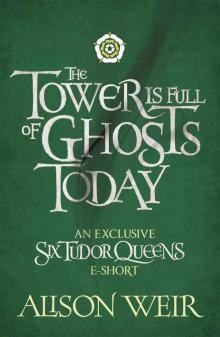 The Tower Is Full of Ghosts Today
The Tower Is Full of Ghosts Today Life of Elizabeth I
Life of Elizabeth I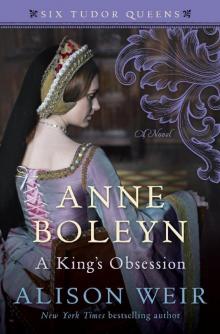 Anne Boleyn A King's Obssession
Anne Boleyn A King's Obssession Lancaster and York
Lancaster and York Jane Seymour, the Haunted Queen
Jane Seymour, the Haunted Queen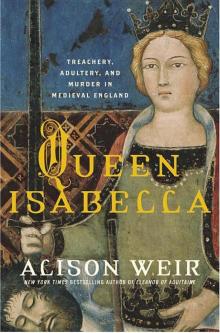 Queen Isabella
Queen Isabella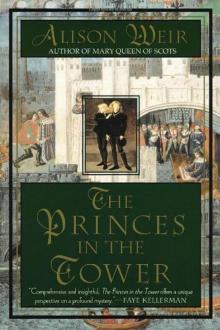 The princes in the tower
The princes in the tower